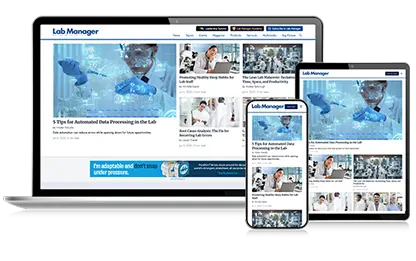The importance of integration
Enterprise-level integration is particularly relevant in today’s business climate, where near-instantaneous response is required by pharmaceutical companies, food growers and manufacturers, oil and gas companies, and many other types of business in order to protect the public and the environment. Seamless enterprise-wide integration is a necessity because it makes key knowledge originating in the laboratory available to management in real time. For this reason, the world of laboratory informatics is changing to meet the needs of today’s diverse industries, which are continually searching for ways to reduce costs, accelerate time to market and respond to increasing regulatory requirements.
Integrating the enterprise facilitates better data correlation and collaboration, end-to-end report generation and more-secure data exchanges, with the goal of providing management with a dashboard view of the key business metrics essential to running the business. This integration enables management to have the critical data it needs before, not after, any point of crisis. Enterpriselevel laboratory information management systems (LIMS) can help streamline the flow of information successfully, providing companies with the information they need to make critical business decisions in today’s business climate.
Evaluating the role of generic LIMS
Historically, LIMS have delivered only 30 to 40 percent of the functionality needed for a specific industry, requiring extensive customization to achieve effective performance in a particular setting. Such customization is commonly possible only through the use of proprietary programming languages that are developed and provided by the LIMS vendor. The combination of minimal industry-specific functionality and often outdated and/ or costly proprietary languages has been particularly troublesome in the pharmaceutical industry. In addition, pharmaceutical laboratories often create their own user documentation, design documentation, validation scripts and help files. As a consequence, the implementation of LIMS in various laboratory settings has been, almost without exception, a long, costly and painful process, not only during installation but also in operation and maintenance of these systems over the years.
Addressing the business needs of today’s industry
Companies operating in the current economic climate can no longer afford to delay the implementation of next-generation tools that will help them increase productivity. With pressure to cut costs, shorten the pipeline life cycle and maximize return on investment, these companies need tools that help them improve enterprisewide communications, reach critical decisions faster, and produce timely and accurate reports on how their products are moving through the pipeline or production process. Working with multiple disparate systems with minimal to no integration is no longer an option.
Today’s LIMS solutions
Today, global deployments of LIMS solutions have become more consistent and more rapid. The implementation of purpose-built LIMS across the enterprise allows for simpler system upgrades, minimized project risks and enhanced compliance. In addition, industry-specific solutions facilitate enterprise-wide application and training. These multifaceted benefits help lower the total cost of ownership of the solution, which is critical to companies that are under ever-increasing pressure to contain costs and increase efficiency. This goal can be achieved by integrating the LIMS with instrumentation and enterprise systems, which can facilitate the global harmonization of business processes, automation of operations and consolidation of data management in a single system, allowing for near-instant decision making.

Purpose-built integration solutions
As companies today look for processes that can help them consistently deliver improved efficiencies and lower costs, LIMS are key contributors in this effort. Delivering advanced functionality that is specific to each stage of the drug development process or to an ISO-regulated manufacturing process, sophisticated, purpose-built LIMS streamline processes and costs and present organizations with unique integration opportunities. These LIMS provide superior capabilities by delivering real-time analysis and reports, facilitating regulatory compliance and product quality, integrating with the company’s broader network and providing secure access to key data throughout the organization.
When the required functionality is built into the base system as standard, it eliminates the need for user-specific customizations during implementation. This, in turn, results in reduced validation time, shortened deployment and easier ongoing support. Purpose-built LIMS for pharmaceutical applications are particularly relevant. According to Frost & Sullivan’s “2008 Strategic Analysis of the U.S. Laboratory Information Management Systems Market,” preconfigured solutions with test methods for specified industries will drive growth across all markets. The more functionality included in the core product out of the box, the less risk, lower costs and less time involved in the implementation, validation and
support of the applications. According to the same Frost & Sullivan report, market growth indicators for LIMS solutions providers are focused on providing customers with not only purpose-built LIMS that are fully integrated with other laboratory equipment but also LIMS that easily align with global enterprise solutions.
In response to the needs of our customers and these market growth indicators, Thermo Fisher Scientific has introduced a new informatics initiative aimed at bridging the gap between laboratory-generated data and the enterprise-level information that is required for missioncritical management decisions. Because of the breadth of our company’s product offerings and our strategic partnerships, we are uniquely positioned to offer Thermo Scientific CONNECTS, an enterprise-level solution set that allows companies to more fully integrate the work of the laboratory into the enterprise. CONNECTS enables our customers to extend the business of science from the laboratory throughout the enterprise, providing both the integration of instruments and systems and the interoperability necessary to transform data into relevant business drivers.
Thermo Fisher’s 25 years’ experience in integrating laboratory informatics with the enterprise has been built and strengthened by its ongoing partnership with industry leaders such as Microsoft, Oracle, and Symyx and members of our Global Partner Alliance program. With CONNECTS, we bring a strategic vision and the resources necessary to help facilitate management-level discussion about the necessity of integrating various sources of data (including laboratory and related instrumentation), enterprise systems (such as MES, PIMS and ERP systems), and enterprise communication tools (such as SharePoint, BizTalk and document management systems), thereby elevating the role of the laboratory in the day-to-day mission-critical decisions required of management throughout the enterprise.
Conclusion
LIMS that are fully integrated with laboratory instruments and enterprise systems can help bring key business knowledge originating in the laboratory to management at all levels of the enterprise. By effectively integrating laboratory data and providing management with key business knowledge, laboratory informatics can elevate the role that the laboratory plays in missioncritical decisions. LIMS can help organizations respond with more certainty to the unforeseen challenges that can often make or break a company.
Modern LIMS serve as common platform frameworks that other informatics solutions, instrumentation, enterprise systems and enterprise communication tools can plug in to in order to share common functions, without having to build them from scratch for each product. A coherent strategy that can integrate data from the LIMS, chromatography data system enterprise resource planning system, manufacturing enterprise system, electronic laboratory notebooks and other sources across the enterprise is a key business driver for pharmaceutical companies.
For more information about Thermo Scientific Informatics solutions, please call +1 866-463-6522 (US) or +44 161 942 3000 (EU), send e-mail to marketing.informatics@thermofisher.com or visit www.thermo.com/informatics.
The importance of integration
Enterprise-level integration is particularly relevant in today’s business climate, where near-instantaneous response is required by pharmaceutical companies, food growers and manufacturers, oil and gas companies, and many other types of business in order to protect the public and the environment. Seamless enterprise-wide integration is a necessity because it makes key knowledge originating in the laboratory available to management in real time. For this reason, the world of laboratory informatics is changing to meet the needs of today’s diverse industries, which are continually searching for ways to reduce costs, accelerate time to market and respond to increasing regulatory requirements.
Integrating the enterprise facilitates better data correlation and collaboration, end-to-end report generation and more-secure data exchanges, with the goal of providing management with a dashboard view of the key business metrics essential to running the business. This integration enables management to have the critical data it needs before, not after, any point of crisis. Enterpriselevel laboratory information management systems (LIMS) can help streamline the flow of information successfully, providing companies with the information they need to make critical business decisions in today’s business climate.
To continue reading this article, sign up for FREE to

Membership is FREE and provides you with instant access to eNewsletters, digital publications, article archives, and more.











